Japanese Swords 101: A Guide for Both Novices and Enthusiasts
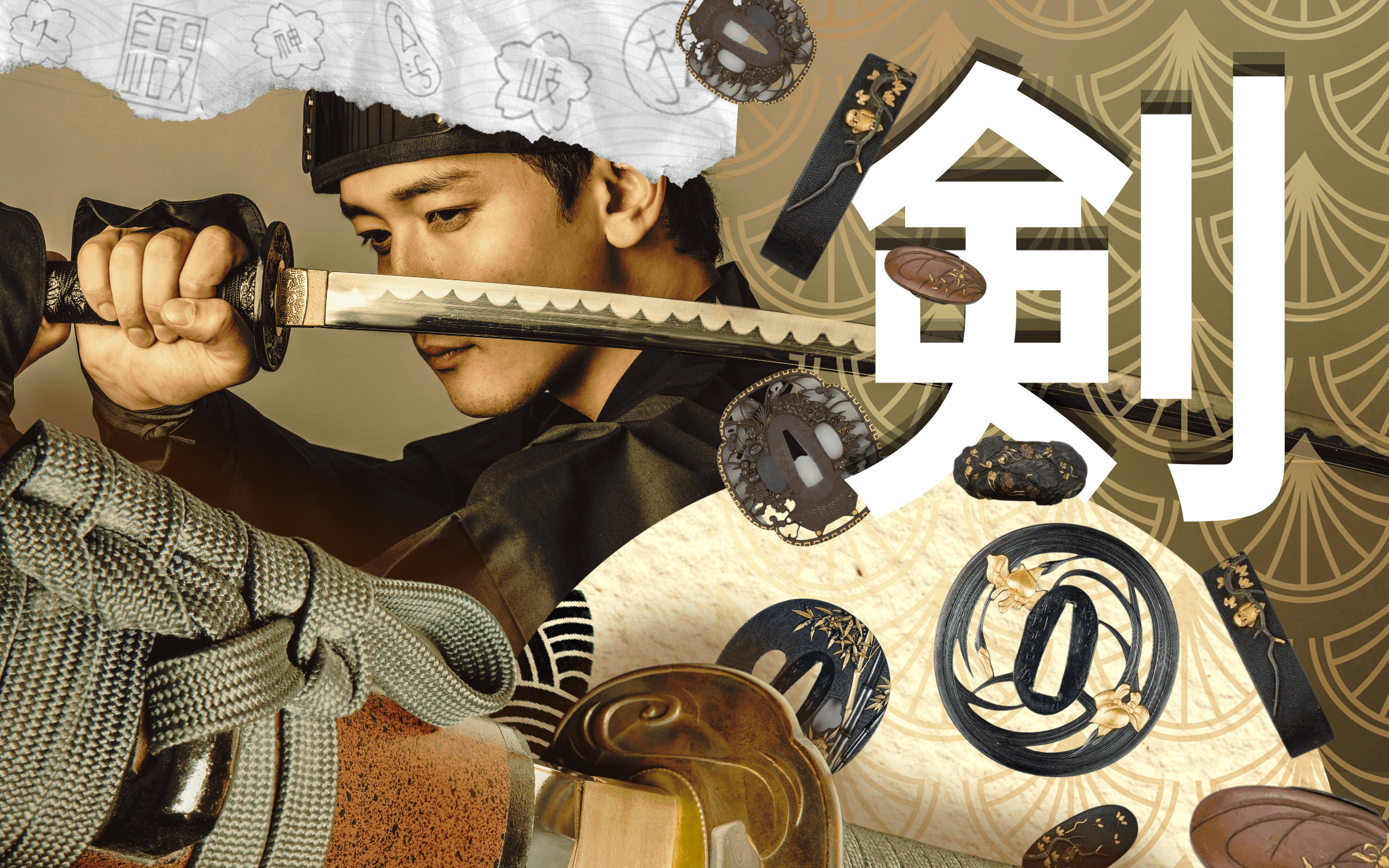
Throughout history, Japanese swords served as a weapon in duels and battlefields. As its design continued to evolve in response to historical events and battle tactics, so did the skills of the swordsmiths who strived to improve their art. Today, these swords that once represented a samurai’s soul are now considered works of art and often highly sought after by collectors all over the world.
At SwordEncyclopedia, our team has compiled a list of articles from our collection to help readers learn more about Japanese swords. Starting with its history, symbolism, and significance in Japanese culture, we hope to bring our readers on an adventure to explore the different types of Japanese swords; its different parts; how they are made, identified, and appraised; and many more.
Chapter 1: History of Japanese Swords
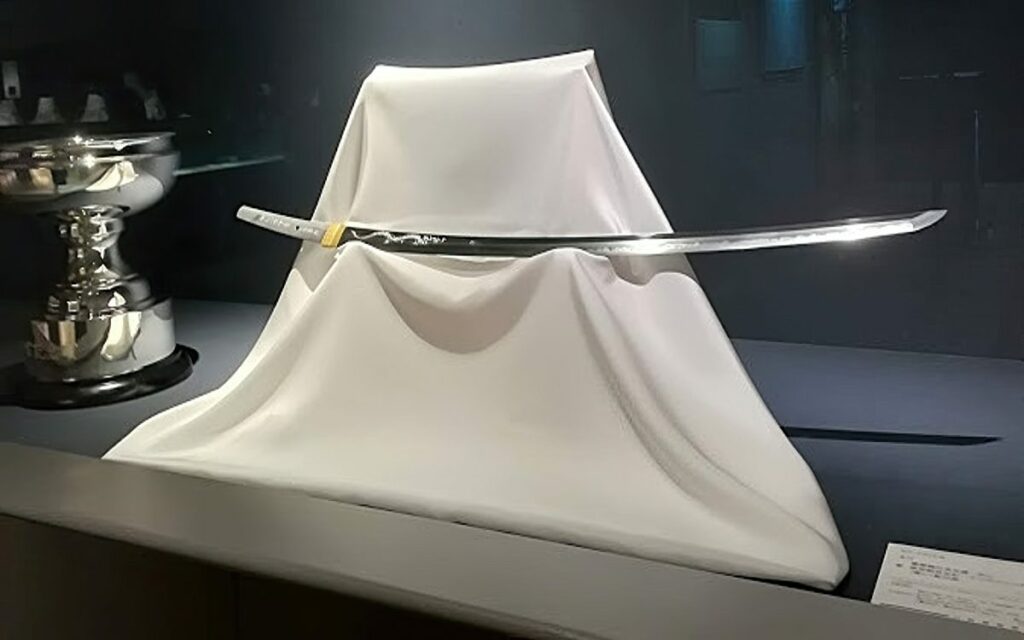
Japanese swords have a rich and lengthy history. Having evolved over the centuries, the blades we recognized today were perfected during the medieval period in Japan. The development of Japanese swords can be categorized based on the different eras. In this article, learn about:
- Jokoto Era – Discover the jokoto swords produced in this era. With the earliest versions made of bronze and featuring straight blades, these doken were primarily used for ceremonial purposes. As the first steel swords appeared during the kofun period, Japanese swords such as the tsurugi (ken) and jokoto tachi (chokuto) emerged.
- Koto Era – Including the Heian, Kamakura, Nanbokucho, and Muromachi periods, Japanese swordsmiths made significant progress in their steelworking techniques leading to improved designs. With more characteristics such as the hi (grooves), horimono (carvings), and other features, Japanese swords became stronger and lighter.
- Shinto and Shinshinto Eras – Beginning from the Momoyama to the late Edo period, new methods and trends in sword production emerged. As the craftsmanship and mountings of swords became elaborate, costly materials were used to produce sword mountings and fittings, making certain blades a symbol of nobility and status.
- Gendaito Era – Gendaito (modern swords) were produced from the mid Meiji period until today. Due to modernization, not only did the samurai class lose their privileged position, swords were no longer a practical weapon for the military. As events such as WWII led to mass produced swords, Japanese blades play more of a ceremonial role or are considered works of art.
Read Chapter 1: Uncovering the History of Japanese Swords Through Successive Eras
Chapter 2: Japanese Sword Types
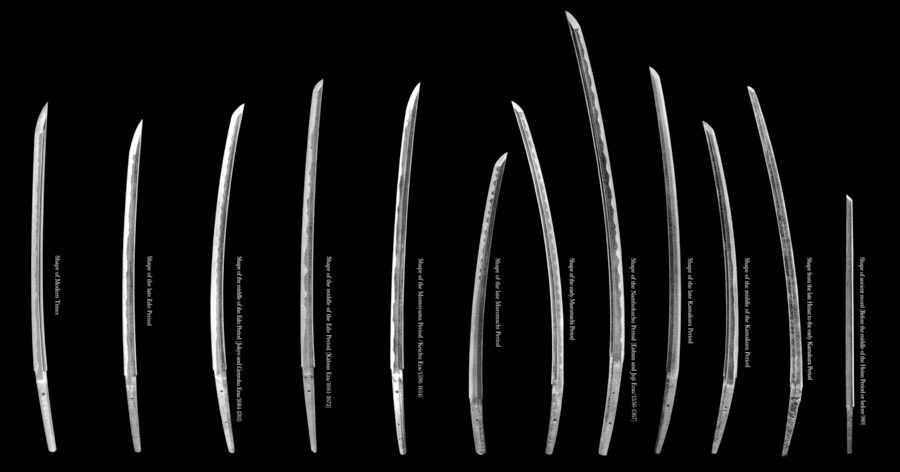
Due to the long history of Japanese swords, it is no wonder that there are many different variants available today. Besides serving as a weapon for feudal Japan’s elite warriors, these samurai swords are also a powerful symbol of their social status and wealth. Join us as we explore the types of Japanese blades used by the samurai throughout the years:
- Tachi – Featuring a long, single edged, curved blade, the tachi was primarily produced during the Koto era, predating even the uchigatana and katana swords.
- Koshigatana – Translating to a hip sword or waist knife, this predecessor of the tanto accompanied the tachi as a sashizoe.
- Kodachi – Little is known about the purpose of the kodachi, but it is believed to have served as a companion sword for the tachi or designed for younger samurai.
- Odachi / Nodachi – This oversized tachi is a “field sword” with blades that are much longer for use on the battlefield.
- Nagamaki – This sword with a handle often as long as the blade itself was used by foot soldiers for a specific purpose in war.
- Uchigatana – Used by the samurai to replace the koshigatana, the use of this sword became so widespread that it eventually replaced the tachi.
- Katana – Not needing any introduction is the famed katana, the samurai sword in Japanese history which served as a weapon and badge of rank.
- Wakizashi – The backup weapon of the samurai, the wakizashi sword is worn on the obi and is suited for close quarters combat.
- Daisho – This matching pair of long and short swords was worn exclusively by the samurai class, remaining popular until the Edo period.
- Tanto – The tanto comes in various shapes and sizes. Besides a weapon of last resort, it is also used in seppuku.
Read Chapter 2: Types of Japanese Swords Used by Samurai Warriors
Chapter 3: Katana: The Preferred Sword of Many
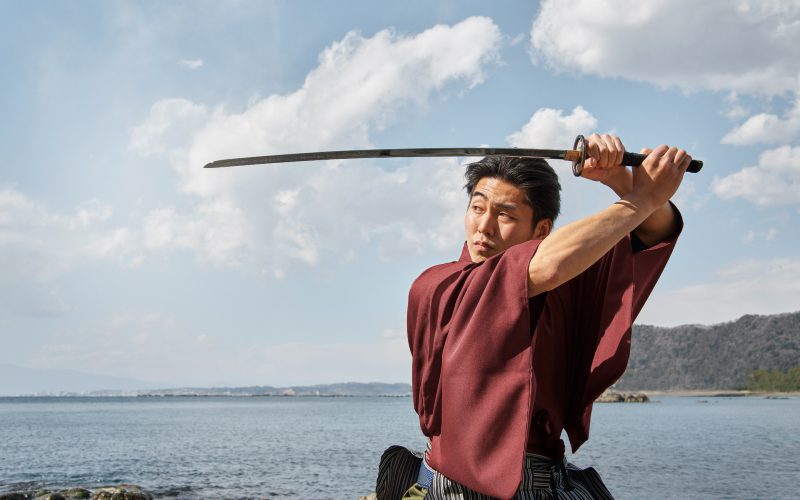
A curved single edged sword often associated with the samurais, the Katana was not only a weapon but also served as a status symbol and work of art. Remaining one of the most iconic weapons in Japanese history and culture, our article discusses the following:
- Characteristics of the Japanese Katana – Defined as a long sword with a blade length specifically over 2 shaku, discover what unique features are required for a katana. Ranging from the curvature of the blade (sori), temperline pattern (hamon), and various terms such as jigane, or jihada, there is much to learn about this sword.
- What makes an authentic katana – While a blade may have all the unique features of a katana, how does one determine if it is authentic and what is required to confirm its authenticity?
- Legality of Katana in Japan – It may be puzzling but individuals are not permitted to carry the katana out in the open and even require a permit to own one under Japan’s law. Even swordsmiths are required to comply with specific requirements!
- Katana sword in martial arts – Besides being the most popular Japanese samurai sword, it is also often used in several Japanese martial arts such as kenjutsu, kendo, iaido, battojutsu, and toyama ryu.
- History of the Katana sword – Invented as a response to the requirements of battle, the katana allowed for faster response in combat. However, its development to its form today occurred over centuries, starting from the Muromachi period.
Read Chapter 3: Katana Explained: An Exploration into the Heart of Japanese Swords
Chapter 4: Ninjato: The Sword of Ninjas

Ninjato or Shinobigatana is a blade believed to be used by ninjas. Featured in pop culture such as movies and anime, it is also employed by contemporary martial arts practitioners. For this Japanese sword that is shrouded in mystery, we delve into:
- Characteristics of the Ninjato – Unlike the katana, this straight sword has specific traits as it is designed to be a deadly yet compact blade. Find out what makes this short sword lethal.
- Construction of the Ninjato – Made from tamahagane, the ninja’s sword consists of both the shingane and kawane to ensure that the blade stays sharp yet flexible.
- Usage of the Ninjato – With a short blade but longer scabbard, the ninjato often offers an element of surprise as it can be drawn faster than what is expected. Due to its design, ninjas had an advantage when dueling with samurais.
- Caring for a Ninjato – There is more involved than simply acquiring a blade. Learning to care for the sword is crucial to prevent rusting and keep it in tip top shape.
- History of the Ninjato – Much is unknown as there is no proof of the sword’s existence along with its legendary wielders. So, is it a real sword from history?
Read Chapter 4: Ninjato: The Popular Sword of Ninjas
Chapter 5: Japanese Sword Parts
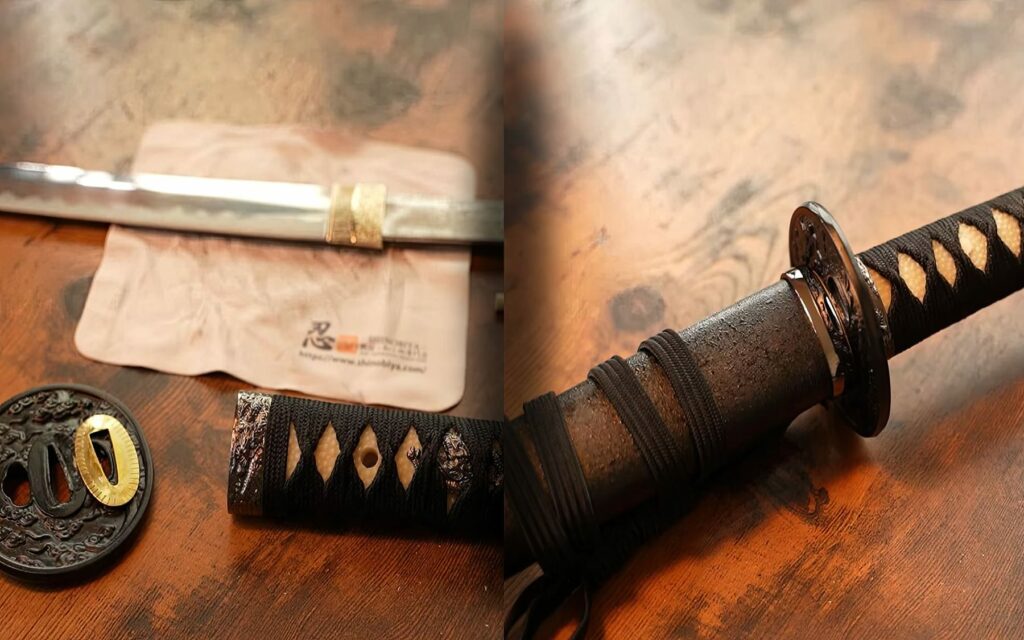
Japanese swords are more than just their blades. In fact, there are many different parts that make up the sword, along with the intricate details that are designed meticulously to produce a deadly but beautiful weapon. Although there are many different Japanese swords available, they feature similar sword parts, mountings, and fittings.
- Nagasa – Undoubtedly one of the most important parts of the sword is the blade. However, the blade is further broken down into different parts including the kissaki, boshi, yokote, nakago, hamon, bohi, mune, ha, jihada, shinogi, and shinogi-ji.
- Tsuka & Tsuba – After all, a blade is difficult to use without a handle (tsuka). Often made out of wood, Japanese sword handles are designed specifically for the user to give it a good grip, strength, and rigidity. In a Japanese sword, the handle consists of the tsuba, ito, samegawa, seppa, mekugi, mekugi-ana, menuki, kashira, habaki, and fuchi.
- Scabbard – Known as a saya, a Japanese sword’s scabbard is designed to fit the sword perfectly. Made out of wood, it can come in a variety of shapes and sizes with parts such as koiguchi, sageo, kurikata, shitodome, kojiri, and more.
Read Chapter 5: Japanese Sword Parts and Mountings: The Fittings of the Samurai Blade
Chapter 6: Japanese Sword Making
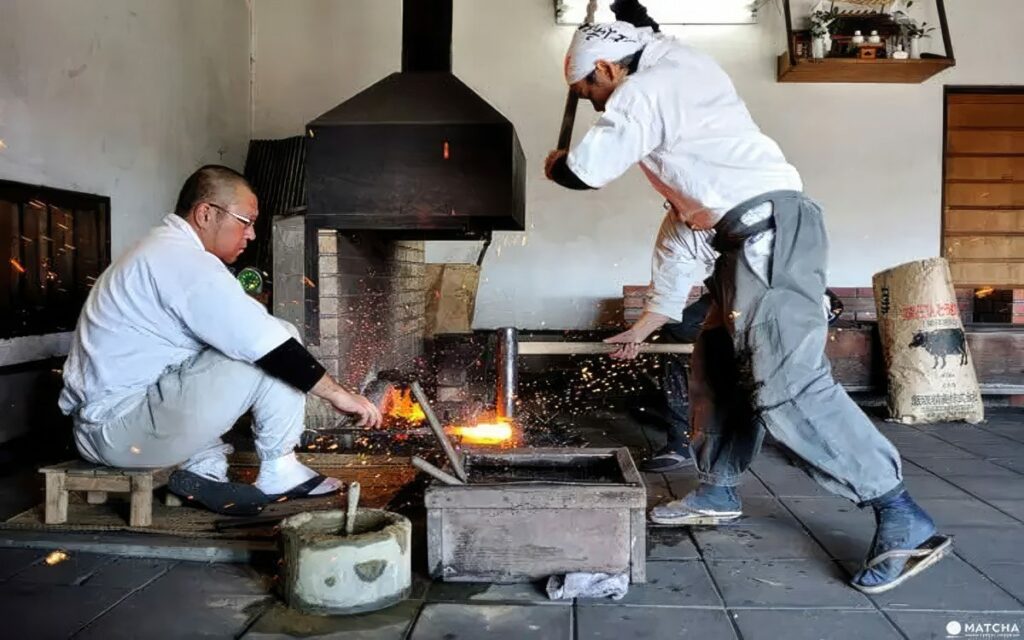
Traditional Japanese sword making skills are unlike any other. Instead of the work of a swordsmith alone, the creation of these blades requires the help of several highly skilled artisans. This highly complex process includes:
- Manufacturing Tamahagane – The process of creating a Japanese sword first involves manufacturing traditionally smelted steel (tamahagane) using a tatara, utilizing satetsu.
- Swordmaking Process – Starting with tanren to refine the raw steel, the blade is hand forged to create the jihada, shingane, and kawagane. The outer jacket and inner core are then welded together during the tsukurikomi and sunobe process. Next, the hizukuri, shiage, tsuchioki, yaki-ire, sorinaoshi, kajitogi, adding the hi and horimono, and finally filing and finishing the tang.
- Finishing the Sword – Once the blade is completed, the sword has to be polished before it is equipped with a habaki and placed in a saya. Each step is completed by an independent artisan who specializes in the craft.
- Making of Sword Mountings and Fittings – The production of a koshirae requires several parties. These mountings and fittings are prized for their functional, artistic, and decorative qualities.
Read Chapter 6: Exploring The Craft of Japanese Swordmaking and Swordmithing
Chapter 7: Japanese Sword Identification
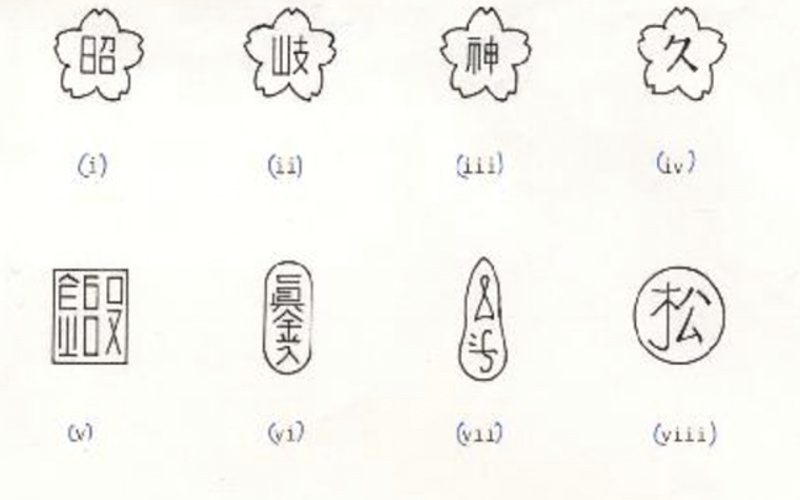
Throughout history, the markings on blades served as the maker’s identification. In Japanese swords, hand carved kakihan or kao (personal marks) have been dated back to the 1300s while stamps only appeared during the industrial age. Due to modern war such as WWII, the interest in WWII Japanese Swords have led to the compilation of information over the years by several sword experts and translators. With permission, our article summarizes the information available.
- Origins of Japanese Sword Stamps – There is little information available regarding the use of stamps on Japanese military blades. The earliest is believed to be the Showa stamp, followed by stamps such as Seki, Gifu-in-Sakura, Star, and more.
- Japanese Army Sword Inspection Marks – Besides stamps, inspection stamps were also required to ensure the quality of the blades such as WWII Japanese swords. We also delved into manufacturers’ logo and armored factory arsenal trademarks.
- Stamps on Japanese Military Blades & Fittings – Compiled from various sources, we attempt to interpret the meaning behind each logo or stamp on the blades and fittings.
- Buddhist Stamps on Japanese Swords – There are also various Buddhist stamps found including the flaming jewel, god of fortune and fertility (Daikokuten), Kuniyasu, Masayasu, and more.
- Koshirae Stamps – Japanese swords also have stamps on their mountings. Those we know of are based on advertisements placed in war era publications.
- Other Markings on Japanese Swords – Other markings such as modified roman numerals, patent stamps, dots, and foil labels have also been observed on many antique blades.
Read Chapter 7: Japanese Sword Identification through the Discovery of Markings and Stamps
Chapter 8: Japanese Sword Appraisal
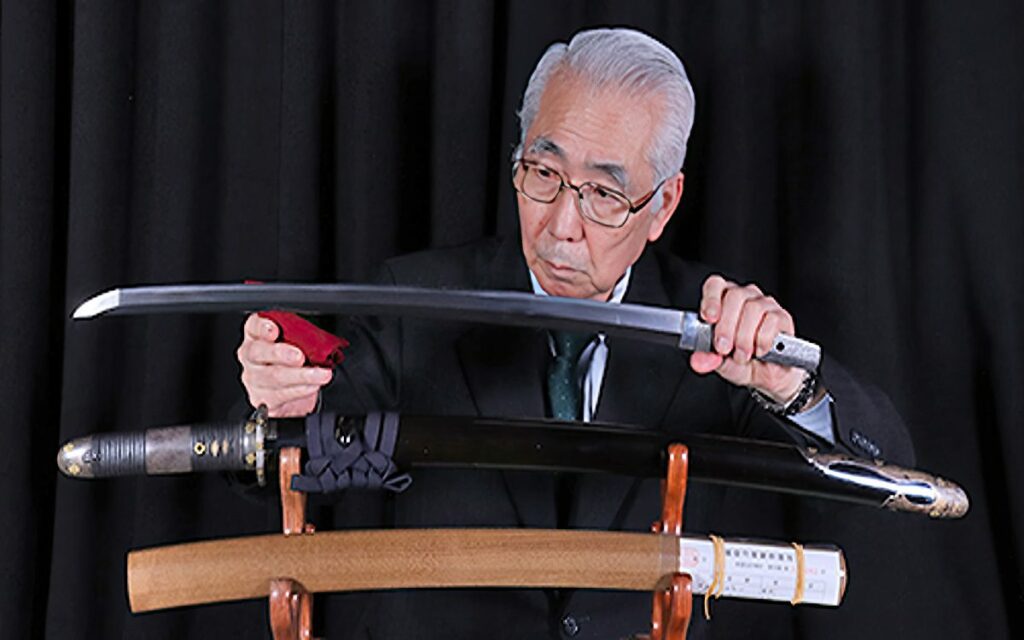
Japanese sword appraisal is a highly specialized field that requires knowledge and expertise as the value of the blade is based on its origin, when it was made, along with who it was forged by. Known as Kantei, this process must be performed by a certified appraiser (kantei-ka) who then issues a written appraisal (kantei-sho). Appraised during a formal event (shinsa), there are many factors to consider:
- Criteria for Japanese Sword Appraisal – Traditionally made nihonto have artistic qualities and are appraised based on many factors including the sugata (shape), jigane (steel surface), hamon (hardened edge), mei (signature), and tang.
- Appraisal of New Japanese Swords – Since kantei and shinsa applies only to antique blades, new Japanese swords are appraised based on the swordsmith’s rank.
- Organizations Involved in Appraisals – In Japan, sword appraisal is taken seriously as it involves the nation’s culture and history. Therefore, official organizations such as the Nippon Bijutsu Token Hozon Kyokai and Nihon Token Hozon Kai were established.
- National Treasures – Japanese swords that are important cultural assets are designated as Juyo Bunkazai (important cultural item) and Kokuho (national treasure).
Read Chapter 8: An Insider’s Guide to Japanese Sword Appraisal and Valuation
Chapter 9: Use of Japanese Swords
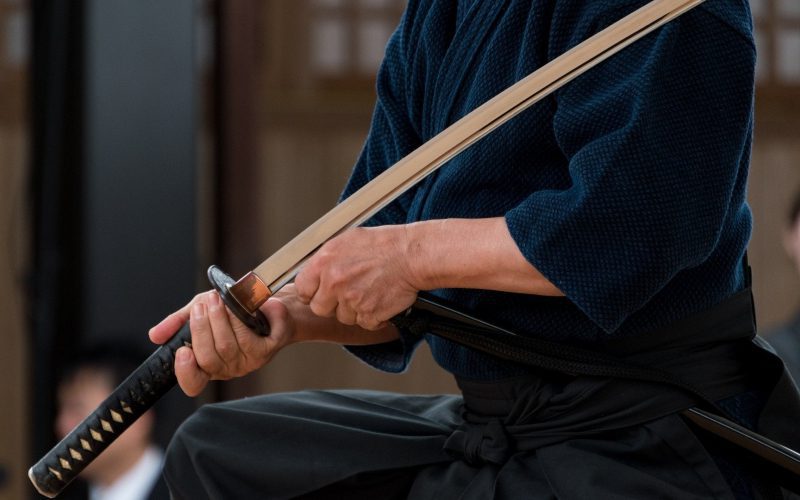
Japanese swords have been used in sword fighting since feudal Japan. Today, the culture remains strong as many sword fighting techniques and schools have been established.
- Types of Japanese Sword Fighting – There are several popular forms of Japanese sword fighting including kenjutsu, iaijutsu, ninjutsu, and kendo. While it can be difficult to determine which is the best, each technique has its own pros and cons.
- Japanese Martial Arts Schools – Besides the different types of techniques available, there are also many martial arts schools that focus on teaching a range of these techniques to their students.·
- History of Japanese Sword Fighting – During the Tang dynasty, the influence of the relationship between Japan and China resulted in the fusion of ideas, including those of martial arts. With time, warriors developed individual styles and continued to develop sword fighting techniques.
Read Chapter 9: Types of Japanese Sword Fighting and Their Weapons


